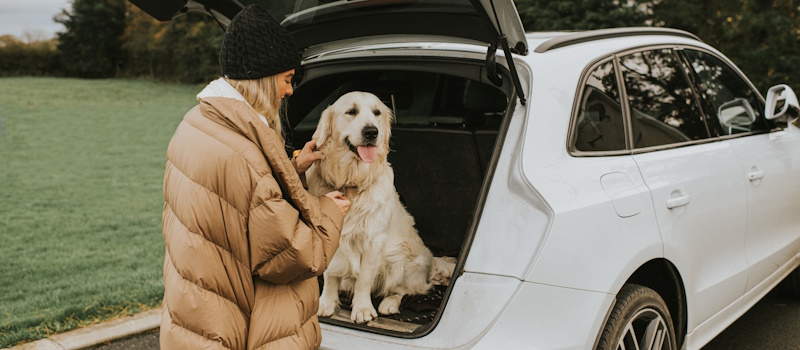Seven Things You Should Know About Winter Car Safety for Your Pet
Seven Things You Should Know About Winter Car Safety for Your Pet

Seven Things You Should Know About Winter Car Safety for Your Pet
Each season poses different risks to your pets. This blog explores how to keep your pet safe around your vehicle as temps start to dip.
Wintertime traveling with pets
To keep pets safe in winter, it's best to leave them at home where they are warm and comfortable. However, there are times (such as when visiting the vet) that you need to take your pet with you.
If you must travel with your pets, ensure they are properly secured, use a pet-friendly restraint system, and never leave them unattended in a cold vehicle. If your pets are traveling with you, ensure the car is warm, bring emergency supplies for them, and never leave them unattended in the car.
Some pets, like cats, seek warmth and shelter by crawling into a car engine or hiding in the tire wheel well area. This behavior can pose a serious threat when the vehicle is started or driven. To ensure pet safety this winter, be vigilant and take the following precautions if your pet is likely to be anywhere near your car:
- Bang on the hood before starting your car.
- Check under the car.
- Use the car horn a few times as an alert.
- Look for paw prints that would indicate your pet might be nearby.
7 common vehicle hazards for pets in the winter
Pets in vehicles during winter can face several dangers due to the cold weather. It's crucial for pet owners to be aware of these risks to ensure the safety and well-being of their furry companions. Common dangers for pets in vehicles in wintertime include:
Hypothermia
Cold temperatures can lead to hypothermia in pets, especially if they are left unattended in a vehicle without proper insulation or heating.
Frostbite
Pets with exposed skin or thin fur are also susceptible to frostbite. Paws, ears and noses are particularly vulnerable.
Dehydration
Just like in summer, pets can become dehydrated in winter. The dry, heated air in vehicles can contribute to this condition or cause skin irritation for your pet.
Limited visibility
Snow and ice accumulation on the vehicle can limit visibility. Traveling with a pet could add to this distraction, increasing the chance of accidents. Make sure your car is cleared off before leaving, your wipers are working, and distractions are at a minimum.
Inadequate ventilation
A closed vehicle can trap moisture inside, leading to condensation. This can make the interior damp and uncomfortable for pets, causing respiratory problems.
Pets left in a running vehicle, even in a garage, can be exposed to carbon monoxide poisoning from vehicle exhaust. Pets have smaller lungs and are more susceptible to exposure than humans — especially small pets, such as birds.
Escape attempts
Pets might attempt to escape from the vehicle, especially if they are frightened or uncomfortable due to the cold. Your pet trying to jump out of the car could lead to accidents. If pets succeed in getting out, they could quickly get lost. Use a traveling crate or travel harness to help prevent escape attempts.
Chemical exposure
Antifreeze and other chemicals used in winter can be toxic to pets if ingested. Spills inside the vehicle can pose a danger. Your pets could also be exposed to spills or leaks left on the garage floor.
